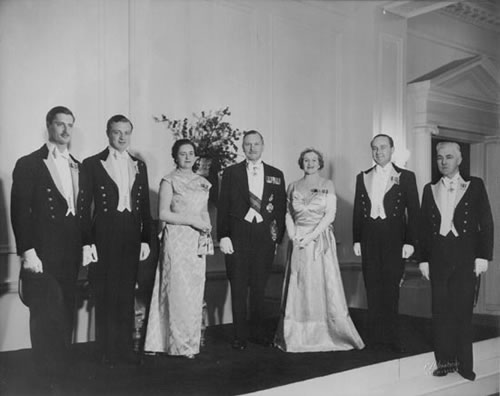The governors-general and their wives
As the new boy would have known, it was a so-called job for the boys, a political gift. Lords Bledisloe (1930–5) and Galway (1935–41) and Sir Bernard Freyberg (1946–52), for example, were Conservatives.
The 1926 Imperial Conference confirmed that dominions (New Zealand had become one in 1907) could nominate their governors-general. Politicians, however, clung to the old ways. Under this system the British prime minister drew up a shortlist, ran it past the monarch for approval and then asked the New Zealand prime minister to choose.
There were some exceptions. In 1945, for example, New Zealand Prime Minister Peter Fraser nominated Freyberg. Since the term of Sir Arthur Porritt (1967–72), however, all New Zealand's governors-general have been New Zealand-born or at least New Zealand citizens. Cabinet chooses the governor-general, who is appointed by the Queen on the nomination of the prime minister.
Married to the job
It was a job for the boys in another sense as well: before Dame Catherine Tizard (1990–6), the governors-general were male. That meant that, like it or not, their wives found themselves married to a very public job.
The duties of these women varied. They acted as patrons of community societies, and they visited schools, hospitals and women's groups. Ladies Liverpool, Galway and Newall headed wartime patriotic societies. In 1926, Lady Alice Fergusson founded the League of Mothers.
They did not have to worry about the housework. Lady Barbara Freyberg saw the cook each morning, arranged menus and allocated the guest rooms, but the military secretary supervised the rest of the domestic work.
Sir Bernard and Lady Freyberg (1946–52) and official staff
More about this image

